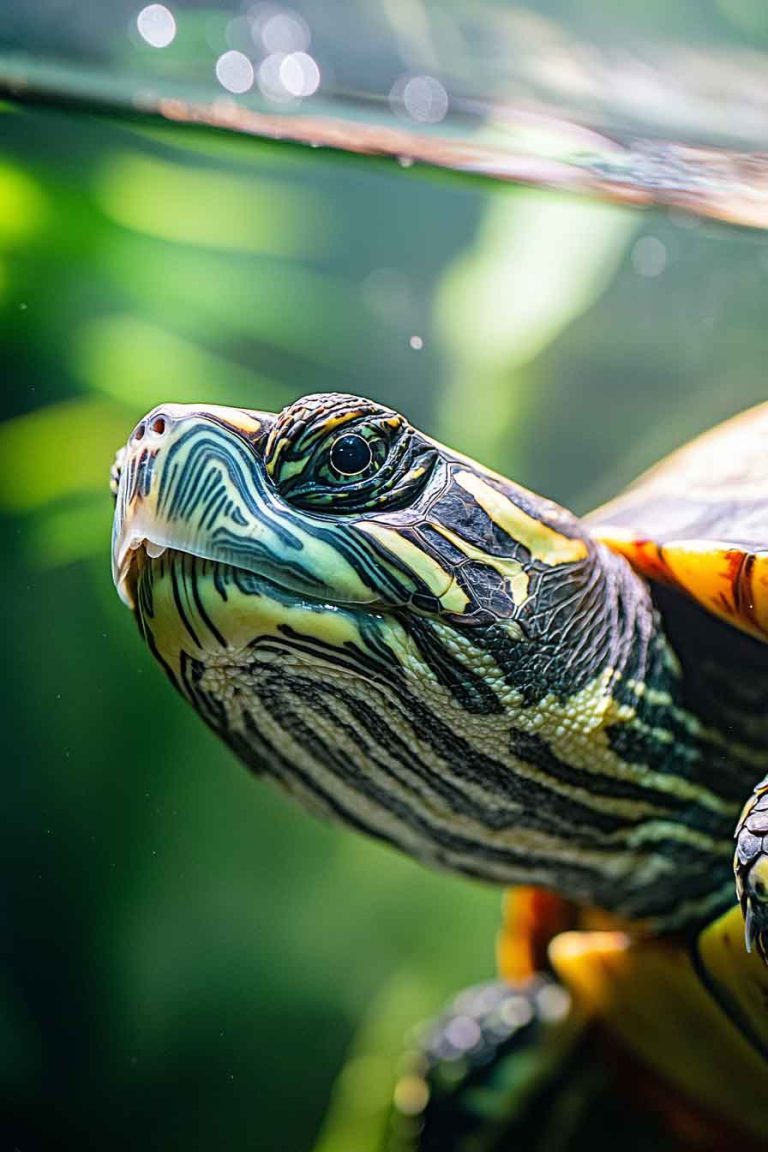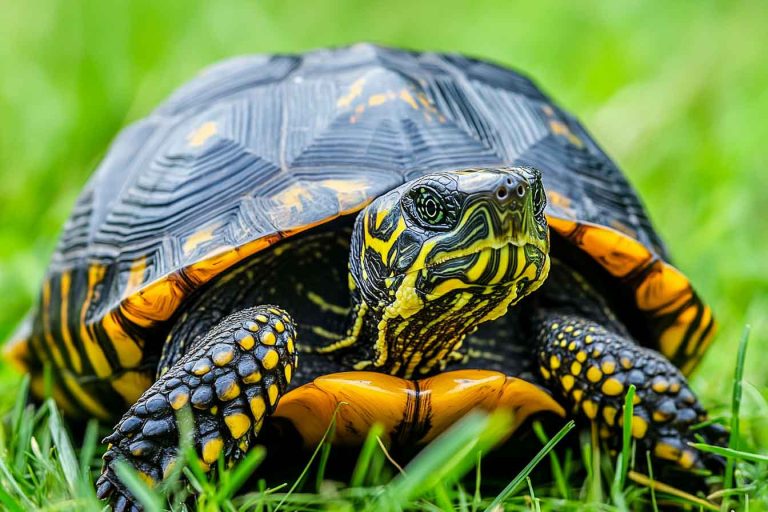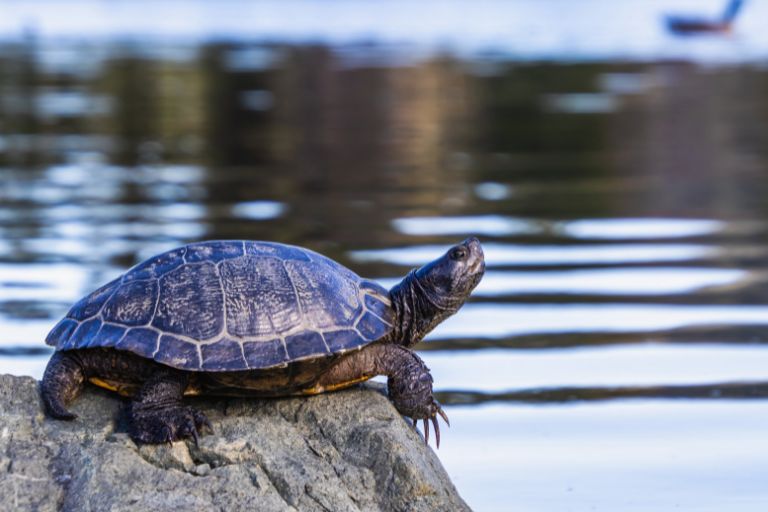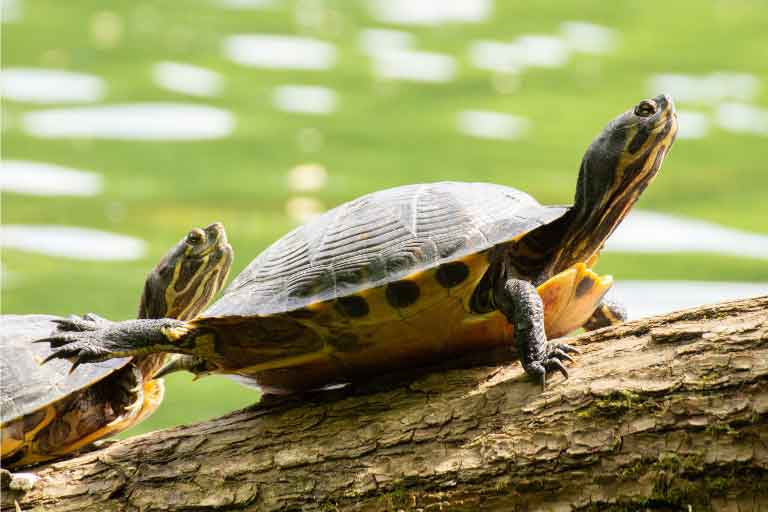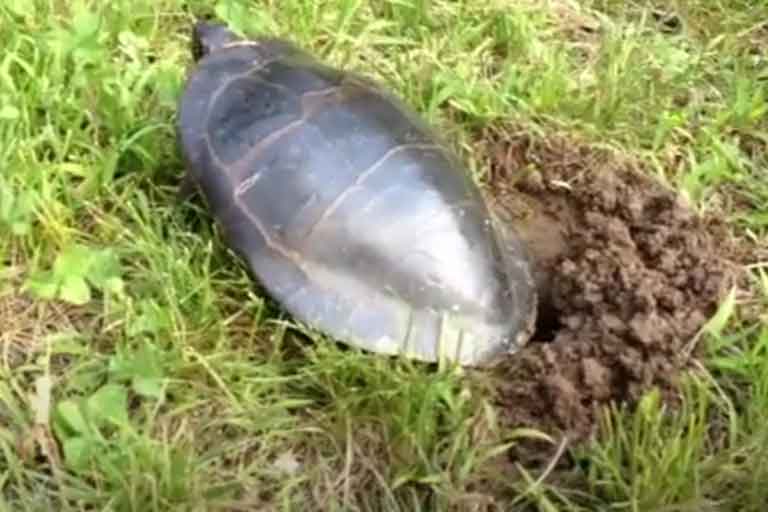Why Is My Turtle Always Hungry? What Should I Do?
Turtles are funny little creatures—sometimes chill, sometimes grumpy, and sometimes… always hungry. I remember when I first brought my red-eared slider home. He’d swim up every time I passed by like he hadn’t eaten in days—even if he just had breakfast 10 minutes ago. So if you’re wondering why your turtle is constantly begging for…
Turtles are funny little creatures—sometimes chill, sometimes grumpy, and sometimes… always hungry. I remember when I first brought my red-eared slider home. He’d swim up every time I passed by like he hadn’t eaten in days—even if he just had breakfast 10 minutes ago.
So if you’re wondering why your turtle is constantly begging for food, you’re not alone. Let’s talk about what this behavior might really mean—and what you should (and shouldn’t) do about it.
Is It Normal for a Turtle to Always Be Hungry?
Honestly? Yes—and no. Turtles can act like they’re always hungry even when they’re not. It’s super common, especially in captive turtles, to associate human presence with food. They learn fast: human equals snack time.
But just because they act hungry doesn’t mean they are hungry. And overfeeding a turtle can be a bigger problem than underfeeding. That’s why I had to learn to read between the lines—and help my turtle stay healthy, not just full.
Why Your Turtle Might Seem Always Hungry
Let’s dig into the most common reasons your turtle might be constantly begging or snapping at the glass like it’s dinner time 24/7.
1. You’re Feeding Them Too Little (or Infrequently)
When I first started out, I thought I was feeding the right amount—until I learned that turtles need different feeding schedules based on age and species. Young turtles (especially under a year old) often need to be fed once daily, while adults do well with every other day or three times a week.
If you’re feeding less than that or offering mostly low-calorie veggies, they might truly be hungry. A well-balanced diet matters a lot.
2. It’s Just a Learned Habit
I’ll be real with you—my turtle pretends he’s starving every single time I open the tank lid. But it’s learned behavior. He knows food might come when he sees movement near the tank. That excited paddling and begging? It’s like clockwork. But after years of raising turtles, I’ve realized—it’s not always real hunger. It’s just habit.

3. They’re Bored
Yes, turtles get bored too! A lack of stimulation can lead them to focus on the one exciting part of the day: food. If there’s nothing to do—no plants, rocks, tunnels, or things to explore—they’ll beg for snacks just to pass the time.
Think of it like humans opening the fridge when we’re not hungry—just bored.
4. Improper Diet or Lack of Nutrients
Sometimes the issue isn’t the amount—it’s the type of food. If your turtle is getting the same dry pellets every day and not enough variety (leafy greens, protein, occasional fruit), their body might still crave nutrients.
I had to tweak my turtle’s meals to include a mix of veggies (like romaine and dandelion greens), protein (like feeder fish or insects), and calcium-rich treats. Once I got the balance right, the begging chilled out.
5. Tank Temperature Is Too Low
This was something I didn’t realize at first. Turtles rely on external heat to digest their food. If the water or basking area is too cold, their metabolism slows down. That means they won’t properly absorb nutrients—even if they’re eating enough.
And guess what? A turtle with poor digestion might keep eating and still feel hungry. Make sure your tank’s water is between 75–80°F (for most aquatic turtles) and the basking area is closer to 85–90°F.
6. Growth Spurts in Young Turtles
If your turtle is still growing, it might go through phases where its appetite skyrockets. I noticed this with my young turtle—some weeks he’d eat double what he usually did. That’s natural during growth spurts, but it doesn’t last forever. The key is keeping portions controlled even when they’re extra enthusiastic.
7. Begging Isn’t Always Hunger
Here’s the truth: turtles are natural opportunists. In the wild, food isn’t always available, so when they see it—they go for it. In a home tank, that same instinct kicks in, even if they’ve just eaten. So yeah, sometimes they beg just because they can.
Understanding this helped me stop feeling guilty when I had to ignore those cute little “feed me” eyes.
What You Should Do (and Not Do)
So, what’s the move when your turtle acts like it’s starving 24/7? Here’s how I handled it—and what I recommend:
1. Set a Feeding Schedule and Stick to It
This was a game-changer for me. I feed my adult turtle every other day, and younger ones daily. Pick a time and keep it consistent. Over time, your turtle will adjust and stop acting like every moment is mealtime.
Here’s a rough guideline I follow:
- Hatchlings to 1 year – Feed once daily
- Juveniles (1–3 years) – Feed every other day
- Adults (3+ years) – Feed 2–3 times a week
Always adjust based on species, health, and activity levels.
2. Measure the Right Portion
A simple rule I use is the “head size” method—feed as much food as would fit inside your turtle’s head if it were hollow. Sounds weird, I know. But it works. It helps avoid overfeeding, especially with high-protein or pellet-heavy meals.
3. Give a Balanced Diet
Don’t just rely on commercial pellets. They’re great—but variety matters. I rotate between:
- Pellets – Main diet, 40–50%
- Leafy greens – Like romaine, dandelion, or collard
- Protein – Like bloodworms, crickets, or feeder fish (especially for young turtles)
- Occasional treats – Chopped fruit, shrimp, or cooked egg white
Mixing it up made a big difference for my turtle’s energy and shell health.
4. Limit Human Interaction During Non-Feeding Times
This one’s tough, but it works. I stopped going near the tank just to watch or tap the glass. Why? Because every time I did, my turtle expected food. Keeping interactions around feeding time only helped reduce his constant begging.
5. Add Enrichment to Prevent Boredom
Once I realized my turtle might be begging out of boredom, I started adding tank toys and hiding spots. Smooth rocks, floating logs, live plants, and even treat balls made a difference. He had things to explore—and it distracted him from obsessing over food.
You’d be surprised how much happier turtles get when their environment feels more natural and fun.
6. Track Their Weight and Shell Health
A turtle that’s always begging and gaining too much weight is a red flag. I started weighing my turtle monthly using a kitchen scale (safely, of course). I also checked his shell for signs of overfeeding—like pyramiding (raised, bumpy shell growth).
If your turtle is putting on too much weight or looks sluggish, it’s time to cut back and re-evaluate the diet.
What Not to Do When Your Turtle Acts Hungry
As tempting as it is to toss them an extra snack, here are a few things I learned to avoid:
❌ Don’t Feed Every Time They Beg
Trust me, I’ve been there. But giving in every time only reinforces the begging. It’s not love—it’s enabling. Stick to your feeding plan.
❌ Don’t Overdo Protein or Treats
Too much protein can lead to kidney problems or shell deformities. And treats? They’re like turtle candy. Use them sparingly—like once a week or less.
❌ Don’t Skip UVB or Heat Lamps
Without proper lighting, turtles can’t metabolize their food correctly. This leads to poor health and increased appetite. I always keep a UVB bulb running 10–12 hours a day, along with a good basking light.
FAQs
1. Can I free-feed my turtle like a dog or cat?
Nope. Unlike cats or dogs, turtles don’t know when to stop eating. They’ll keep going—so scheduled meals are best.
2. Is it okay to give them fruits every day?
I don’t recommend it. Fruits should be an occasional treat. They’re high in sugar and not part of a turtle’s natural daily diet.
3. How do I know if I’m underfeeding my turtle?
If your turtle looks thin (sunken eyes, visible bones) or seems lethargic, that could be a sign. Talk to a reptile vet if you’re unsure. But always assess diet, lighting, and temperature first.
Final Words
If your turtle seems always hungry, you’re not a bad pet owner—it just means it’s time to dig a little deeper. From my own experience, the solution usually comes down to diet, environment, or routine. A hungry turtle isn’t always a starving turtle. Sometimes, they’re just excited or bored—or just being dramatic (yup, turtles do that too).
So stick to a healthy schedule, give them space to explore, and don’t let those begging eyes guilt-trip you into overfeeding. You’ve got this. And your turtle? They’ll be just fine—well-fed, happy, and a little less dramatic at dinner time.


